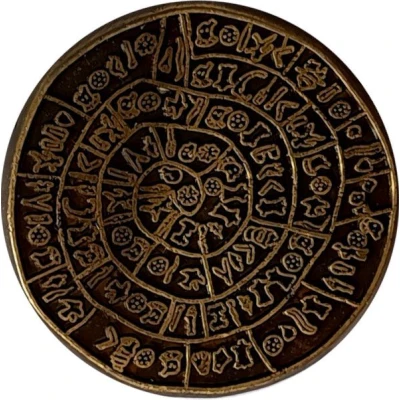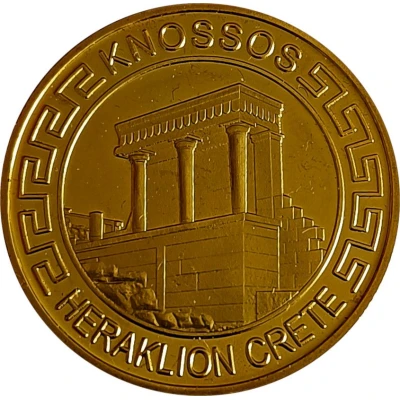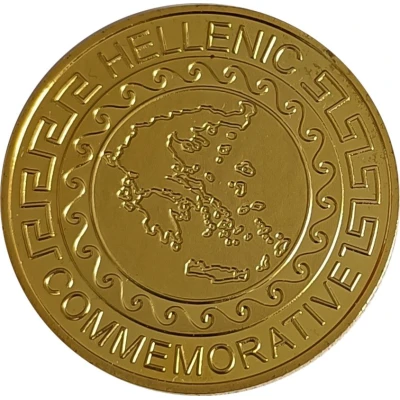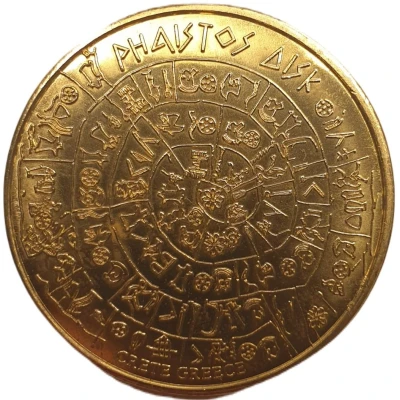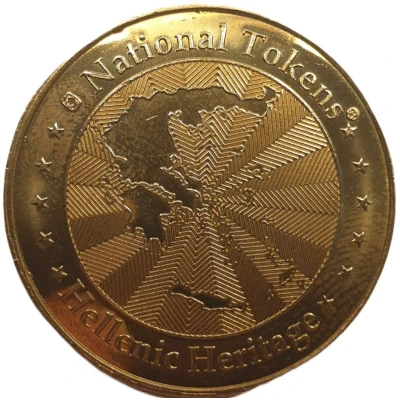Reverse
Clay representation of the Phaistos disc, 16cm in diameter and with its hieroglyphic characters still undeciphered.
Edge
Smooth and curved
Comment
The Phaistos or Phaestos disc is a baked clay disc discovered in 1908 by Italian archaeologist Luigi Pernier at the archaeological site of the Minoan palace of Phaistos, Crete. It could date from the middle or end of the Minoan Bronze Age (2nd millennium). Approximately sixteen centimetres in diameter, it is covered on both sides with hieroglyphs printed with punches. A total of 241 signs, 45 of them different, cover the disc, forming a spiral from the outside to the center of the object. Its use, meaning and even its place of manufacture are the subject of bitter debate. To date, no other similar object has been found.
https://fr.wikipedia.org/wiki/Disque_de_PhaistosThis is an automatic translation. The original text is:
Le disque de Phaistos ou disque de Phaestos est un disque d'argile cuite découvert en 1908 par l'archéologue italien Luigi Pernier sur le site archéologique du palais minoen de Phaistos, en Crète. Il pourrait dater du milieu ou de la fin de l'âge du bronze minoen (IIe millénaire). Son diamètre est d'environ seize centimètres et il est couvert, sur ses deux faces, de hiéroglyphes imprimés à l'aide de poinçons. En tout, ce sont 241 signes, dont 45 différents, qui recouvrent le disque, en formant une spirale partant de l'extérieur vers le centre de l'objet. Son usage, sa signification et même son lieu de fabrication font l'objet d'âpres discussions. À ce jour, aucun autre objet similaire n'a été retrouvé.
https://fr.wikipedia.org/wiki/Disque_de_Phaistos 